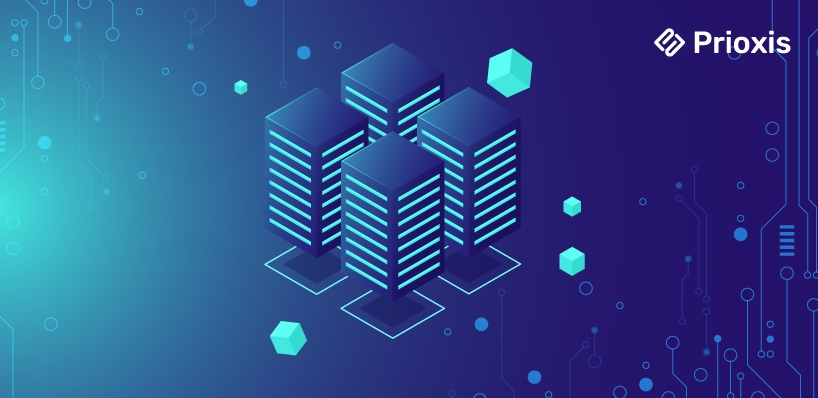Serverless Vs Microservices: Choose the Best Architecture
 Admin
Admin Cloud
Cloud Jun 21, 2024
Jun 21, 2024

Table of Content
Software architecture plays a critical role in this organization. It's about defining clear boundaries between different parts of the software, preventing unnecessary interactions, and promoting manageable complexity.
Making good choices in software architecture is essential - understanding the "why" behind design decisions is more important than just "how" to implement them. A well-designed architecture provides structure, simplifies development, and promotes maintainability. Conversely, poor architecture leads to a tangled mess that's difficult to understand, modify, or extend.
This article dives into two popular software architectures: serverless and microservices.

What is Serverless Architecture?
Serverless can be a confusing term, so let's break it down. The core idea is building applications without managing servers yourself. Serverless architecture, a specific type of approach, is a cloud-based development model.
Here, developers write code and upload it to a cloud platform. The platform handles all the server and infrastructure management, allowing the code to run in response to specific triggers. The big advantage? Reduced costs!
Serverless platforms automatically scale your application based on usage, so you only pay for the resources you use. Serverless architectures are often linked to two other concepts: Function-as-a-Service (FaaS) and Backend-as-a-Service (BaaS).
What is Microservices Architecture?
Microservices architecture breaks down an application into small, independent services. Imagine it like a modular kitchen gadget - each service has a specific function and works on its own, but together they create a complete system. This makes development and maintenance easier - if one microservice malfunctions, it can be fixed without affecting the others.
Microservices development is becoming increasingly popular for building complex and scalable applications. There are two main types: stateless (no data storage) and stateful (stores data for tasks like database operations).
Similarities between Serverless and Microservices Architectures:
Despite their differing methodologies, serverless and microservices architectures have certain key similarities that make them appealing for designing modern applications:
- Modular Design Both models divide complicated applications into smaller, self-sufficient components. This modularity encourages faster development, simpler maintenance, and greater scalability.
- Focus on Business Functionality Both allow developers to focus on core application logic (what the program does) rather than server maintenance.
- Increased Agility Both systems' modular structure enables faster adaptation to changing requirements. New features or problem fixes can be implemented in single modules without affecting the overall system.
- Improved Fault Tolerance Issues with a single module (microservice or serverless function) are less likely to bring down the entire program. In a well-designed system, other modules can continue to work while the afflicted one is repaired or replaced.
- Potential Cost Savings Both architectures have the potential to lower expenses. Serverless technology reduces server management overhead, and microservices development can maximize resource use by scaling individual services based on demand.
Explore Further: Microservices vs Monolithic
Serverless vs Microservices: A Side-by-Side Comparison
Choosing between serverless and microservices architectures depends on your project's specific needs. Here's a breakdown of key differences to help you decide:
1. Approach
Microservices: Requires dedicated teams for development, deployment, support, and maintenance. Offers more control and customization.
Serverless: Relies on a third-party cloud vendor for server management and infrastructure. Easier to set up but less control.
2. Cost
Microservices: Higher initial cost due to team setup and component integration. No vendor lock-in.
Serverless: Potentially lower costs due to shared resources and reduced need for internal server expertise. Potential vendor lock-in.
3. Runtime
Microservices: No limitations on runtime, storage, or RAM, ideal for complex, long-running tasks.
Serverless: Functions have limited runtime (e.g., 15 minutes on AWS Lambda) to optimize resource usage.
4. Development Complexity
Microservices: More complex due to distributed architecture and component management. Offers greater flexibility and scalability.
Serverless: Simpler development and deployment with focus on individual functions triggered by events. Can limit overall system flexibility and scalability.
5. Real-World Examples
Microservices: Netflix (server maintenance), Amazon (website and mobile app), Uber (business processes)
Serverless: Nordstrom (website features), Codepen (development platform), Figma (file management)
In short, Microservices offer more control, flexibility, and scalability but require more upfront investment and expertise.
Serverless provides a simpler, faster development experience with potentially lower costs but may limit control and runtime for complex tasks.
Integrating Serverless and Microservices Architectures
Combining microservices and serverless architectures is like assembling a dream team of developers. Microservices divide applications into digestible chunks, and serverless eliminates the burden of managing infrastructure for each one. This translates into:
- Developers focus on code and logic rather than server configuration, allowing for faster development.
- Smaller, independent functions have a faster deployment rate.
- More efficient iterations: It is easier to make adjustments and provide updates.
Which architecture should organizations select, serverless or microservices?
The needs of your application determine whether you should use serverless or microservices.
- Serverless is ideal for applications with unexpected traffic patterns. Advantages include cost-effectiveness, ease of scaling, and low maintenance.
- Microservices are ideal for high-traffic applications. Each service grows independently to accommodate surges, and the architecture is adaptable for adding or eliminating services.
Choose serverless for speed, event-driven applications, and cost-efficiency. Choose microservices for high availability and handling significant traffic.
Bottom line
As microservices and serverless technologies become very popular nowadays, one might think of having to choose between them. Usually, that's not a problem for small applications: you use whatever you feel like in the development stage. But once your app grows, it's time to think about moving away from microservices and adopting serverless to maintain a stable platform.
Need help from specialists to improve your Microservices Development system? Alternatively, do you require extra help to accelerate the development process? Come to us, Prioxis. Please contact us now.
Get in touch
